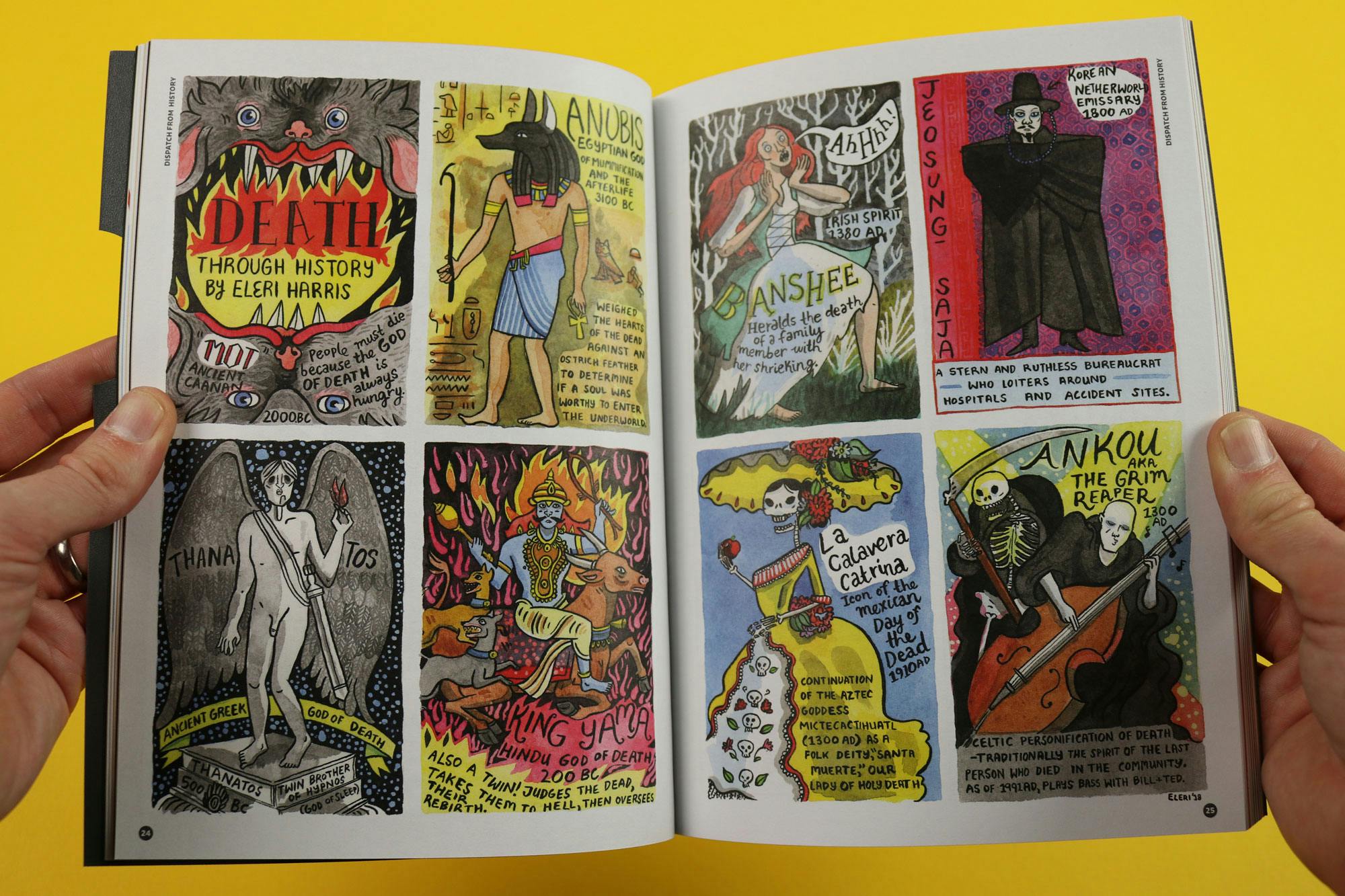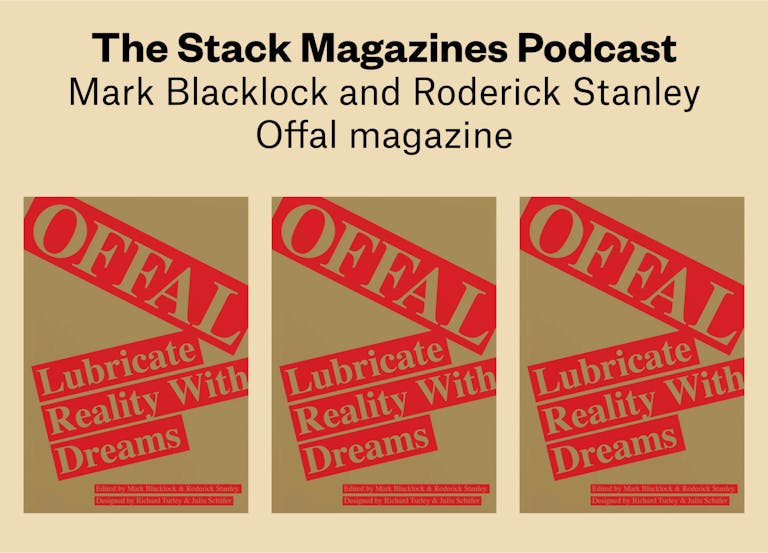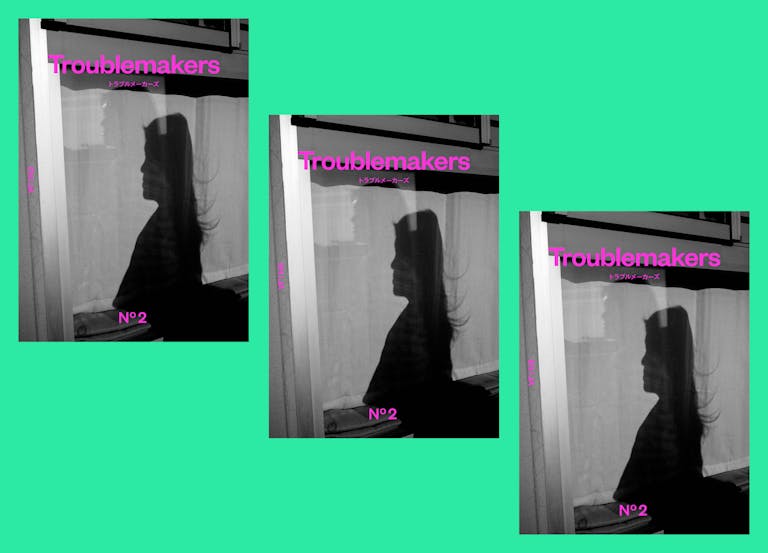The Nib’s ‘death’ issue shows why illustration matters in 2018

It’s not that illustration is a lost art, exactly. You only need look at any online magazine or print journal to see it’s still called upon to accompany articles on everything from legal highs to food photography. But that’s also the problem: illustration is seen as an addendum, often glossed over entirely — a support act at best. (And we all know how many people turn out to watch the support.)
But Matt Bors wants to change that. As Editor-in-Chief of The Nib, Matt is far from a golden age-ist — his magazine began life as a column on Medium, after all — but he does want to see illustration and cartooning returned to its rightful place as an art form and a genre of journalism in and of itself.
The first print issue of The Nib hit shelves recently, tackling the grim but unavoidable subject of death. We spoke to Matt about the decline of editorial cartooning, creating “a salve for the constant onslaught of bad news,” and how — when it comes to illustration — nothing matters more than a point of view.
Why do you think the world needs a new illustration magazine right now? What does illustration do that other forms just can’t capture in the same way?
The Nib shouldn’t be able to exist. All the good cartoonists should have staff jobs creating their political cartoons and explainers and stats and journalism for all the top publications. But they don’t, so I made The Nib.
Editorial cartooning as a profession has been in a harsh decline for decades and the relatively newer form of comics journalism didn’t have any centralized place championing the form and building up new creators. So we’re pulling all these threads together to put out a comics-only publication. I think we need a place of our own that is just going to advocate for and represent comics as a forethought rather than an afterthought.
You can’t fake it with comics; they need to be drawn and it takes a lot of time and skill to do so, and it takes even more skill to make them compelling and readable. Anyone can rewrite news and slap a headline on it, or write a post about the outrage of the day. That’s what a lot of media companies are right now; it’s simple. Doing it well in comics, making it funny or illuminating—now that’s something you might actually read.
How did you come to start The Nib and what would you like to achieve beyond publishing great illustration?
The Nib started in 2013 as a publication on Medium — I’d heard they were hiring up editors and writers to run little independent publications on the platform and I pitched what I’ve always wanted to see online: a comics section compiled of the best political and non-fiction cartoons, with a little random humour thrown in for the hell of it.
Things have changed over the years, and we’re now with First Look Media, but the basic editorial formula hasn’t shifted much. What’s different is how we’ve evolved with the roiling changes to online publishing, putting out animation, putting all our content in a daily newsletter, and now going back to print to find a sustainable business model.
I’m doing everything I want with The Nib — publishing great comics, putting money in artists’ hands, putting out a print magazine. The measure of true success for me is going to be keeping this thing going, building out our membership programme to support the level of work we’re doing, growing the print circulation to tens of thousands, something that lasts decades. That’s the ambition. New magazines can’t often get to those numbers, but I think we have a shot. We’re riding the line between news publications, comics, and indie mags and grabbing a little from each discipline and putting something together that’s unlike anything else out there right now.
What matters to you when it comes to illustration?
A point of view. I love things that look nice and are visually compelling, but ultimately we’re doing satire and journalism, telling stories or picking apart policy and ridiculing those in power.
I care a lot about craft myself, but there are cartoonists with crude styles who are very effective at humor or telling stories because their ideas are good, the writing is sharp, their aesthetic is all part of it. On the other hand, you can be a jaw-droppingly great draftsman with nothing much to say.
I’m looking for artists with a unique voice — and in that I include everything from their visual style to their sense of humour to their politics.
What kind of stories do you, as an editor, want to tell with The Nib?
True ones. Political ones. Ones where even personal pieces relate to the world at large and address social issues. There’s a lot of fiction in comics and we’re trying to carve out a little spot for non-fiction, which is granted a lot of shelf space in books and magazines, but hasn’t been developed as much in comics.
We’re more or less publishing two main types of comics — satirical political cartoons and longer non-fiction comics, be they journalistic or closer to memoir. With the political cartoons, I’m trying to revive and advance this artform that’s been know to be a little staid in recent decades. I want things that either make me laugh out loud or feel like a punch to the gut, something you might have been trying to articulate and the artist just nails perfectly.
The non-fiction, particularly in the magazine, is where we try to distinguish ourselves and run work on par with the leading non-fiction mags, just in comics form.
Who do you think should be reading The Nib?
Anyone who cares about the state of the world right now. For people who want a salve for the constant onslaught of bad news, we have a daily newsletter with political cartoons about everything going on day-to-day in the hellish news cycle. The print quarterly, that’s in the opposite direction: Bigger themes, broader in scope, heavy on the journalistic comics. No Trump. Well, a little Trump. You can never truly escape the man.
This is definitely not a publication that’s only for people who love comics. I would suspect most of our readers are more interested in politics and the news than comics themselves as a medium, but we’re here to do both.
With the current climate being what it is, do you think this is the right time for political illustration to set itself up as a powerful medium for a wider audience?
We have a problem right now with the media with people being unable to call a lie a lie, with false neutrality, with failing to call out white nationalism for what it is. Political cartoonists don’t seem to have that problem. The good ones, anyway.
Jill Abramson, the former editor of The New York Times, was asked in an interview what she thought was missing from that publication and answered “cartoons.” The interviewer seemed incredulous. ”Seriously?” they said, “Political cartoons?”
Of course we need more of them. Comics are an inherently populist medium. They can be created easily, distributed widely, seen by everyone, rile up all the right people. “Stop those damned pictures” and all that. I don’t ever plan to stop.
















